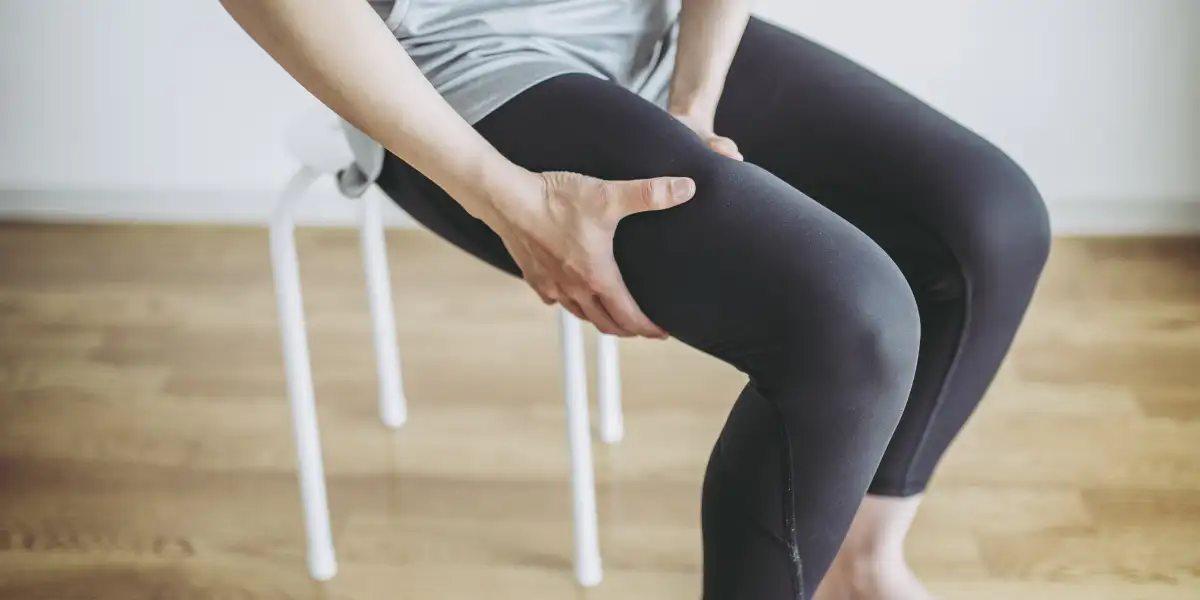Claudication is a significant medical condition often associated with peripheral artery disease (PAD). Recognising and understanding claudication is crucial as it is not only a debilitating condition that can impact the quality of life but also an early warning sign of underlying vascular disease. Timely identification of claudication symptoms allows for early intervention, improving patient outcomes.
This article will help understand its associated treatments that can assist individuals in managing this condition, potentially slowing disease progression and reducing the risk of severe complications.
Table of Contents
What is Claudication?
Claudication is a medical condition characterised by leg pain and discomfort from physical exertion, mainly due to reduced blood supply. It is a classic symptom of a wider circulatory issue known as Peripheral Artery Disease (PAD).
To understand claudication comprehensively, we delve into its symptoms, common causes, and potential complications, each providing a piece of the larger puzzle that makes up this complex condition.
Symptoms
What is Claudication? Claudication presents a spectrum of symptoms that can significantly influence an individual’s daily life. Although predominantly observed in the lower limbs, these symptoms can also manifest in the upper limbs in certain scenarios. Here’s an overview of how claudication typically presents in different body parts.
Lower Limbs
- Intermittent Claudication
This is the hallmark symptom, characterised by discomfort, fatigue, or leg pain during exercise, which subsides with rest.
- Decreased Exercise Tolerance
Over time, individuals might find their ability to engage in physical activities such as walking gradually limited due to pain.
- Numbness or Weakness
Some individuals may experience numbness or a sense of weakness in their legs during physical activity.
- Coldness in Lower Leg or Foot
Reduced blood flow may cause a noticeable coldness or chill in the affected leg, especially compared to the other leg.
- Changes in Skin Colour or Hair Loss
In advanced stages, the skin on the affected leg may appear paler or bluish, and hair loss on the legs and feet may occur.
- Pain at Rest
In severe cases, individuals may experience pain in the lower limbs even at rest, which can disrupt sleep.
Upper Limbs
What is Claudication? Although less common, claudication symptoms can also occur in the upper limbs, particularly if there’s a significant blockage in the subclavian arteries, which supply blood to the arms.
- Arm Fatigue or Discomfort
Similar to leg symptoms, individuals may experience fatigue, discomfort, or pain in their arms during physical activity, such as lifting heavy objects.
- Numbness or Tingling
During exertion, numbness, tingling, or weakness may be felt in the arms.
- Coldness in Hand or Arm
Just like in the legs, reduced blood flow may result in a feeling of coldness in the hand or arm, particularly noticeable compared to the other side.
- Pain at Rest
In severe cases, individuals may experience discomfort or pain in the arms even when not engaged in physical activities.
Dr John Richardson, a renowned vascular specialist, says, “Claudication symptoms can significantly impact an individual’s quality of life. However, by adopting healthy lifestyle changes, it’s possible to manage these symptoms effectively and slow the progression of the disease.” This statement underscores the importance of early intervention and a proactive approach to managing claudication.
Causes and Risk Factors of Claudication
Understanding the risk factors for developing claudication can be instrumental in its prevention and early detection. These risk factors contribute to the development of atherosclerosis and accelerate the progression of existing diseases.
- Smoking
Smoking is a major risk factor for claudication and PAD. It causes damage to the endothelium (the lining of the blood vessels), promotes the accumulation of fatty deposits in the arteries, and decreases the ability of the blood to carry oxygen. This combination of effects dramatically increases the risk of developing claudication, and it’s worth noting that the risk is proportional to the number of cigarettes smoked per day and the number of years of smoking.
- Hypertension
Also known as high blood pressure, hypertension puts additional strain on the blood vessel walls, promoting the development of atherosclerosis. Consistently high blood pressure can cause damage to the arteries, making them more susceptible to the accumulation of fatty plaques.
- High Cholesterol
Elevated levels of low-density lipoprotein (LDL), often called “bad cholesterol,” contribute to forming fatty plaques in the arteries. The reduced blood flow to the muscles during exercise can trigger claudication symptoms.
- Type 2 Diabetes
Diabetes accelerates the process of atherosclerosis, particularly in the presence of poor blood glucose control. High blood sugar levels can damage the arteries, making them more prone to the buildup of fatty plaques. Moreover, diabetes can lead to neuropathy, exacerbating the pain and discomfort associated with claudication.
- Chronic Kidney Disease
People with chronic kidney disease often have accompanying conditions like hypertension and diabetes, which increase the risk of atherosclerosis and, consequently, claudication.
- Advanced Age
Ageing is a risk factor for many diseases, including PAD and claudication. As we age, our arteries naturally stiffen and become more prone to damage. The cumulative effect of the other risk factors over many years can also lead to the onset of claudication symptoms in older adults.
Diagnosing Claudication
The diagnosis of claudication, a symptom of Peripheral Artery Disease (PAD), involves a combination of medical history review, physical examination, and various diagnostic tests. These procedures aim to confirm the presence of claudication, identify the location and extent of arterial blockage, and determine the severity of the condition. Here’s an overview of the diagnostic process:
- Medical History and Physical Examination
An individual’s medical history often provides clues to claudication. Doctors usually ask about the symptoms, their onset, and factors that worsen or improve them. During a physical examination, the physician may check for weak or absent pulses in the legs.
- Ankle Brachial Index (ABI) Test
This simple, non-invasive test compares the blood pressure in the ankles with the blood pressure in the arms. A low ABI value typically indicates PAD and can suggest the presence of claudication.
- Blood Tests
Blood tests can detect conditions contributing to PAD and claudication, such as high cholesterol, diabetes, and kidney disease. They also help rule out other causes of symptoms.
- Exercise ABI
This test is similar to the regular ABI test but is done before and after exercise, often walking on a treadmill. It helps determine whether symptoms are indeed due to exercise-induced claudication.
- Six-Minute Walking Test
This functional exercise test assesses the distance an individual can walk on a flat surface in six minutes. It provides information about physical endurance and the functional impact of claudication.
- Doppler Ultrasound
This imaging test uses sound waves to visualise the blood flow in the arteries. It helps identify blocked or narrowed arteries that could be causing claudication symptoms.
- Segmental Doppler Pressure Test
This test measures blood pressure in multiple segments of the limbs to localise the site of arterial disease. A significant drop in pressure between two adjacent segments indicates arterial narrowing or blockage.
- Angiography
These imaging tests visualise the inside of the arteries. Computed Tomography Angiography (CTA) and Magnetic Resonance Angiography (MRA) are non-invasive and use CT scans or magnetic fields, respectively, along with a contrast dye to obtain the images. Catheter-based angiography is more invasive and involves guiding a catheter through an artery to the area of interest; contrast dye is injected to highlight the blood vessels on the X-ray images.
Treatment Strategies and Interventions
Treatments for claudication can range from lifestyle modifications and medication to more invasive surgical procedures, depending on the severity of the condition.
- Smoking Cessation
Stopping smoking is crucial for claudication management. It not only slows the progression of PAD but can also alleviate symptoms of claudication, as tobacco use exacerbates the condition by narrowing and hardening the arteries.
- Diabetes Management
Good control of blood glucose levels can delay the progression of atherosclerosis, helping to relieve claudication symptoms. Regular monitoring and appropriate treatment are key to managing diabetes and its complications.
- Dietary Changes
A healthy diet low in saturated fats, trans fats, cholesterol, and sodium can help control blood pressure, cholesterol levels, and body weight—all important in managing claudication. Dietary changes should ideally be complemented with regular physical activity.
- Regular Exercise
Regular physical activity can increase the distance individuals with claudication can walk without pain. In particular, supervised exercise programmes are beneficial and recommended as part of standard care.
- Medication
Various medications may be prescribed to manage claudication. Some, like cilostazol and pentoxifylline, can improve symptoms and increase walking distance, while others, such as antiplatelet and cholesterol-lowering drugs, can help slow the progression of PAD.
For severe cases of claudication that don’t respond to lifestyle changes and medications, surgical interventions may be necessary:
- Angioplasty
In this procedure, a small balloon is inserted and inflated in the narrowed artery to widen it and improve blood flow. A small wire mesh tube called a stent is often placed in the artery to keep it open.
- Bypass Surgery
This procedure involves grafting a vein or a synthetic vessel to bypass a blocked artery, allowing blood to flow around the obstruction.
According to Dr Matthew Roberts, chief of the Foot and Ankle Service at HSS, “In severe cases of claudication, when lifestyle modifications and medications fail to alleviate symptoms, surgical interventions like angioplasty or bypass surgery might be necessary. These procedures aim to improve blood flow to the affected limbs, thus relieving symptoms.”
Living Well with Claudication
Living with claudication can pose challenges, but these hurdles can be effectively managed with the right coping mechanisms and lifestyle adjustments. The journey doesn’t end at diagnosis. Treatment of claudication encompasses lifestyle modifications and medical interventions ranging from medication to, in severe cases, surgical procedures.
However, the cornerstone of managing this condition lies in the timely adoption of healthier lifestyle habits, which not only alleviates symptoms but also hampers the progression of the underlying disease. We take significant strides towards conquering claudication by acknowledging the importance of early diagnosis, comprehensive treatment, and lifestyle changes.

